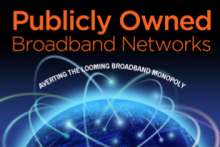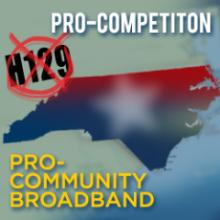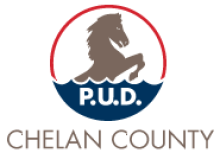Fast, affordable Internet access for all.
FTTH
Content tagged with "FTTH"
Public Testimony in Senate Finance Committee Against Time Warner Cable bill in North Carolina
We have again isolated individual comments from the arguments around Time Warner Cable's bill to strip local authorities of the right to build broadband networks vastly superior to their services. On April 13, the Senate Finance Committee allowed public comment on TWC's H129 bill. Craig Settles has posted an extended story about a small business struggling to get by with the existing paucity of service in her community.
There was no hope that I could efficiently communicate, collaborate, and share online documents and applications with clients and peer professionals. I couldn’t even buy a functional phone line. For years I paid for a level of service from Centurylink that I can only describe as absolutely embarrassing.
This bill will make it vastly harder, if not impossible, for communities to build the necessary infrastructure to succeed in the digital economy. Listening to those pushing the bill, it is very clear they have no conception of the vast difference between barely broadband DSL from CenturyLink and Wilson's Greenlight community fiber network -- essentially the difference between a hang glider and a Boeing 747. And many in North Carolina don't even have access to the hang glider! Yet the Legislature cares more about protecting the monopoly of powerful companies that contribute to their campaigns than ensuring all residents and businesses have access to the fast, affordable, and reliable broadband they need to flourish.
Thanks to Voter Radio for making audio from the hearing available. Each of the following comments is approximately 2 minutes long.
Chelan PUD in Washington Reconsiders Broadband Stimulus Grant
The PUD’s financial review resulted in a series of revised statistics that PUD engineers presented to commissioners Monday. Of the county’s 43,000 premises — mostly homes and businesses — 30,000 have access to fiber. Some 6,000 don’t have access because they live in areas where hookups are more costly, despite their often urban settings. In these areas, the cables that supply electricity are buried directly in the ground. Fiber hookups require costly trenching and installing conduit. Another 7,000 premises don’t have access because they’re very rural. Fiber access to all but the most rural of these locations will be funded jointly by a $25 million federal stimulus grant and PUD matching funds of about $8 million.Of the 30,000 with access, some 37% are taking a service (though they have to subscribe through independent service providers that contract with Chelan PUD due to Washington State law denying the opportunity for PUDs to offer retail services on their own network. Nonetheless, they are signing up 100 new customers per month. The problem is that some of the new connections are in high cost areas (whether due to distance or underground utilities).
Cedar Falls Utilities Videos - Building a Community Fiber Network in Iowa
Cedar Falls Utilities, an incredibly successful publicly owned cable network in Iowa, is upgrading to FTTH. In these videos, they explain some basics of their system. The final video interviews some subscribers.
Their web site has more information, including a fact sheet and price sheet - they have decided to continue offering asymmetrical connections, unlike most of the modern community fiber networks.
Publicly Owned Broadband Networks: Averting the Looming Broadband Monopoly

The Institute for Local Self-Reliance is pleased to release the Community Broadband Map and report, Publicly Owned Broadband Networks: Averting the Looming Broadband Monopoly. The map plots the 54 cities, big and small, that own citywide fiber networks and another 79 own citywide cable networks. Over 3 million people have access to telecommunications networks whose objective is to maximize value to the community in which they are located rather than to distant stockholders and corporate executives.
ILSR has been tracking telecommunications developments at the local and state level, working with citizens and businesses to preserve their self-determination in the digital age.
View the Community Broadband Map
Download the Report [pdf]
Read the Press Release [pdf]
Executive Summary
Quietly, virtually unreported on, a new player has emerged in the United States telecommunications sector: publicly owned networks. Today over 54 cities, big and small, own citywide fiber networks while another 79 own citywide cable networks. Over 3 million people have access to telecommunications networks whose objective is to maximize value to the community in which they are located rather than to distant stockholders and corporate executives.
Even as we grow ever more dependent on the Internet for an expanding part of our lives, our choices for gaining access at a reasonable price, for both consumers and producers, are dwindling. Tragically, the Federal Communications Commission has all but abdicated its role in protecting open and competitive access to the Internet.
Now more than ever we need to know about the potential of public ownership. To serve that need the Institute for Local Self-Reliance has published an interactive Community Broadband Map that gives the location and basic information for existing city owned cable and fiber networks.
Community Network Map
Use the filters to show different municipal networks. These filters are additive, so selecting more will display only the subsets of municipal networks with all of those characteristics. Hover over the "i" tooltip to learn more about the different filters below. Click on any community to learn more.
Communities invest in telecommunications networks for a variety of reasons - economic development, improving access to education and health care, price stabilization, etc. They range from massive networks offering multi-gigabit service to hundreds of thousands of households to small towns connecting a few local businesses. In the map above, networks that serve more than one community are connected by a web - there is no particular significance to the center point in the web, other than to serve as a common connection point.
This map tracks a variety of ways in which local governments have invested in wired telecommunications networks as well as state laws that discourage such approaches.
Our map includes 400 municipal networks serving more than 700 communities. More than 200 of those communities are served by a publicly owned network which blankets the entire city with fiber infrastructure (see last updated date in the map above).
We continue to expand this map with other forms of publicly owned networks, including Indigenously owned networks and telephone and electric cooperatives. Get updates by signing up for our one-email-per-week list announcing new stories and resources.
Media Contact: Sean Gonsalves, sgonsalves@ilsr.org Questions? See the FAQ.
Verizon: The Future is Wired
"If you get underneath what's driving the fiber in the metropolitan markets it has been the need for increased video, increased reliability and security for customers," Seidenberg said. "The way we think about it is even though we have this great 4G mobile network, you still need to have fiber to the premises because we think your home will utilize a Gigabit of bandwidth." ... "The way we look at it is we want to get fiber to as many business premises and cover as much as the footprint as we can and we believe everyone else going to do the same thing in other parts of the country," Seidenberg said.
Lake County, National Public Broadband, Go Separate Ways
Lake County could not reach agreement on a permanent contract with National Public Broadband, its consultant firm for nearly two years. The two sides battled for nearly two months and couldn’t solve issues based on bonus payments and the ability for the county to fire NPB without cause and without penalty. The negotiations had bogged down work on the actual project, Commissioner Paul Bergman said, and the board wanted a fresh start.Additionally, due to the state of financial markets, the County is planning to self-fund the $3.5 million local obligation required to access to the broadband stimulus award. Lake County hoped to bond for the matching funds but the current interest rates make that an fiscally unwise approach. While this does not change the project, it will change the perception of the project and open it to increased attacks from those who don't want the County to build a network (despite the fact that private providers have no interest in providing anything other than slow DSL and cable networks). The County had long maintained that no public money would be used. However, most people will likely not care as long as the project keeps its promise to deliver fast, reliable, and affordable broadband to the community.
Upcoming Minnesota Events
As Minnesota's rural county-wide FTTH projects move forward, we have the opportunity to learn more about them in upcoming events. Thanks to Blandin's broadband blog for covering these issues!
On February 10, Cook County is welcoming Dan Olsen from WindomNet to discuss their experiences with a community-owned fiber network. You can listen to a previous interview on the North Shore with Dan Olsen. In the interview, Dan Olsen mentions that a number of residents use WindomNet to work remotely, commuting only once a week to their jobs in South Dakota.
For the rest of us, mostly located in the metro area of Minneapolis and Saint Paul, we can learn about the projects in Cook, Lake, and Sibley Counties at a Telecommuniations and Information Society Policy Forum at the HHH School of Public Affairs at the University of Minnesota.
Father of Internet Praises Australia Publicly Owned FTTH Network
Vint Cerf recently discussed the importance of Australia's Open Access National Broadband Network.
Google vice-president and chief internet evangelist Vint Cerf said the plan to construct a fibre-to-the-home network to 93 per cent of the nation was a "stunning" investment.
"I continue to feel a great deal of envy because in the US our broadband infrastructure is nothing like what Australia has planned," he said.
"I consider this to be a stunning investment in infrastructure that in my view will have very long-term benefit. Infrastructure is all about enabling things and I see Australia is trying to enable innovation.
He went on to discuss the difficulty of quantifying the economic gains from the network, comparing it to the ways the Interstate Highway system in the US fundamentally changed our economy.
Australia's approach is incredibly bold and far-sighted. Compare that to the Obama's visionary goals of the federal government doing practically nothing more than hoping a reliance on a few massive providers (wireline and wireless) does not leave us too far behind peer nations.






